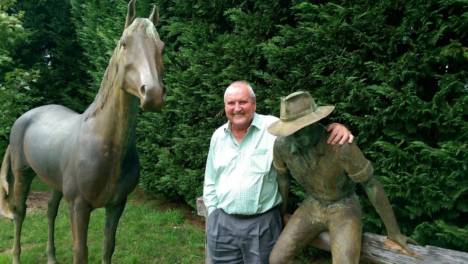Australia’s Mad Man and Ogilvy’s apprentice: the early life and times of Michael Ball
After 80 years Michael Ball lost a long battle with cancer this week. The right hand man to David Ogilvy who went on to establish the first Aussie international network with The Ball Partnership, spoke at length with Mumbrella earlier this year about his journey. This is part one.
Back in the day when Mad Men ruled the world, Australia had its own envoy who rose to the dizzying heights of Madison Avenue, the heir apparent to one of the most famous mad men of all – David Ogilvy.
To most practitioners of the art of advertising today the name Michael Ball may mean little, but the contemporary of the likes of John Singleton, Peter Clemenger and David Mattingly, was, and perhaps remains, the most influential and powerful Australian in the history of advertising. And all from the background of the son of a poor vicar from Eastbourne.
Michael Ball lived the era of the mad men – indeed, he had a hand in creating it – practicing a profession conducted in a haze of cigarettes and martinis, where creative brilliance expressed itself on the back of a napkin, not the screen of a Mac.



Great piece Simon. But when talking about the “influential and powerful” in the history of Australian advertising, along with Peter Clemenger, you’d have to include Keith and Geoffrey Cousins. They didn’t care to self promote as much as some of the other high flyers, but for networking and business strategy, they were peerless.
Great yarn, but you’ve spelled Bob Alcock’s name incorrectly. Here’s his death notice in the NYT:
http://www.nytimes.com/1972/07.....lcock.html
Thanks for your kind words Deb, and for picking up my mistake in Bob’s name.
I have corrected it now.
Cheers
Simon
If we are correcting names then Michael’s first wife was Rita Tanno and they met in New York. She was in West Side Story on stage in the US and from 1967 in Melbourne/Sydney (so after they had moved to Aus together). Rita was the better known of the pair in those days and was mistakenly named as Rita Moreno when her arrival in Melbourne made the papers with her then little known husband.
Thanks More Background,
Michael related to me that they had met in the early in the 60s and that they did meet in Melbourne.
Cheers
Simon – Marketing & Advertising Editor
Interesting story – I am Michael’s first born daughter and can I say that my father has his dates a little mixed up. My mother and father actually met in New York in the mid 50’s. I was born in 1957 and my sister was born in 1960. My sister was a year old when my mother came to Australia to do West Side Story in 1961. We moved to Australia from Canada in 1967.
great story Simon – looking forward to the second half
Brilliant stuff, Simon.
I was a Copy Group Head in London when Michael arrived in 1972. He, unlike most of the Board Directors, had an open door policy and treated everyone as equals in good Australian fashion. He had a series of drinks parties where he exhorted us to exchange the gloom of London, the three day week and so on for Asia or Australia. Three months later I was in Melbourne. Thank you Michael!
Richard Fowler, Creative Director O&M Melbourne 1979-1986